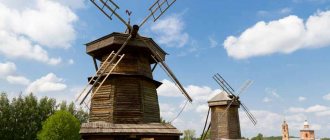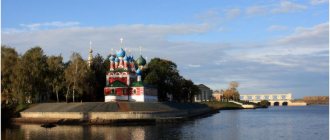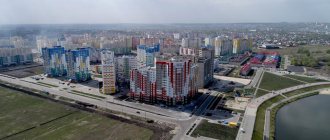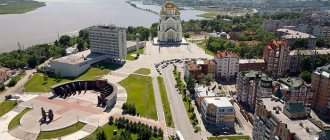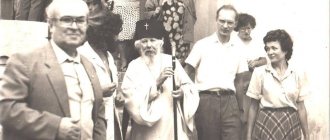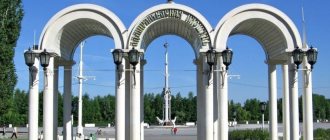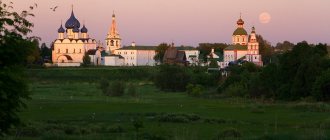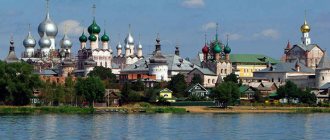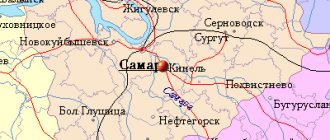Suzdal Kremlin
Suzdal Kremlin
Vladimir region
The Suzdal Kremlin was built in the 11th–12th centuries to protect the city from enemies from the east, south and west. On the northern side of Suzdal, the enemy’s path was blocked by the Kamenka River. The Kremlin was surrounded by earthen ramparts more than a kilometer long; gates, towers and log walls were built on them. The ruins of ramparts and ditches have survived to this day.
The most ancient building of the Suzdal Kremlin is the Cathedral of the Nativity of the Virgin. It was built in the 13th century under Prince George Vsevolodovich. In the 17th century, stone buildings of the Bishops' Chambers were erected in the center of the main square of the Kremlin, which included residential and utility buildings. Until the end of the 18th century, the Suzdal Kremlin served as the residence of the Vladimir-Suzdal bishops. Today it is a museum complex, a monument of ancient Russian art and architecture.
Suzdal: a brief description of the city
Suzdal is located in the Vladimir region, 38 km from the regional center and 224 km along the highway from Moscow. More than 10 thousand people live here. Area - 15 km2.
The city is small, environmentally friendly, since there are no large industrial enterprises in it. The only exception is the meadery, which produces several types of mead. It is famous for its special manufacturing technology using natural products. Rarely does anyone leave without this traditional souvenir.
Its economy is based on tourism, so the hotel business is thriving. Attention is paid to the development of the food industry network: restaurants, cafes, and the provision of banking services. There are sewing workshops.
The city of Suzdal from a bird's eye view
There are no multi-storey buildings in Suzdal. There is a ban by local authorities on the construction of buildings higher than 2 floors. Most of the houses are built of wood or decorated with wood. Every effort is being made to ensure that the city retains its medieval style. His calling card is the white stone walls of monasteries combined with natural wood.
Directors have repeatedly chosen the city to film famous films: “The Youth of Peter”, “The Marriage of Balzaminov”, “The Ballad of a Soldier”, “Dead Souls”, “Blizzard”, “Tsar”, “Andrei Rublev”.
Suzdal is the site of the annual Open Russian Animated Film Festival.
Historical background, names of the city of Suzdal
Historians have been trying to uncover the mystery of the city’s name for decades. There is no consensus yet.
There is a legend about its creation, told by the chronicler Fedorov. It tells the story of three brothers from the tribe of Japheth, who were born after the end of the flood. Two of them laid the foundation for cities in the Russian lands on the shores of the Varangian Sea, and the third explored new lands of forests and swamps. Suzdal grew up in those places.
The Laurentian Chronicle of 1024 contains lines mentioning the settlement of Suzhdal, which meant “the founder destined the city to be here.” The settlement consisted of artisans and farmers. According to one of the most substantiated versions, the word Suzhdal comes from “sezdati”, which in Ancient Rus' meant “to create from clay”. Suzdal is a city made of clay.
Another group of scientists adheres to the theory that this word is of Finno-Ugric origin, like most of the geographical names of this area. This version is not scientifically substantiated enough, but it is what is mentioned in local history publications.
There are a few more assumptions:
- Some historians insist that it is based on the Greek word “Suz dulus” (“thy servant”).
- Another version is that the name of the city comes from the word “sushidalo” (“drained place”).
Spaso-Evfimiev Monastery
Spaso-Evfimiev Monastery in Suzdal, Vladimirskaya…
Vladimir region
The monastery on the high bank of the Kamenka River was founded by Suzdal and Nizhny Novgorod prince Boris Konstantinovich in 1352. When the first abbot of the monastery, Evfimiy, was canonized as an all-Russian saint, the monastery received the name Spaso-Evfimiev. In the 17th century, the wooden monastery buildings burned down during the Polish-Lithuanian invasion, after which the monastery began to acquire powerful defensive towers. By the end of the 17th century, the Spaso-Evfimiev Monastery was one of the largest in Russia.
In 1766, by decision of Catherine II, a prison for political and mentally ill prisoners was established in the monastery. In the 20th century, a political detention center was located here, and then a testing and filtration camp, through which more than 8 thousand people passed. Until the 1960s, there was an educational and labor colony for juvenile delinquents on the territory of the monastery. Only in 1968 the Spaso-Evfimiev Monastery became a museum. Today it is part of the Vladimir-Suzdal Museum-Reserve, and its exhibitions introduce the history and culture of the Suzdal land.
Message about the city
If there is the most beautiful city on the planet, it is Suzdal. A city-museum, a city-reserve, a city of Orthodox churches.
Suzdal was first mentioned in The Tale of Bygone Years. Its name is believed to come from the word “to create.” However, historians are still arguing about this.
Suzdal is located in the Vladimir region. It stands on the Kamenka River. According to archaeologists, the city is more than a thousand years old. Archaeological excavations were carried out in a bend of the river, where the ruins of defensive structures were found. At first it was a small settlement of the ancient Slavs. When Prince Yuri Dolgoruky came to power, the settlement became the center of the Rostov-Suzdal Principality.
Then the capital was moved to Vladimir, but Suzdal continued to remain the center of first the independent Suzdal principality, and then the Suzdal-Nizhny Novgorod principality.
Throughout its existence, the city suffered many battles. The Volga Bulgars fought for it; during the Tatar-Mongol invasion, Moscow Prince Vasily III was captured here and the enemies completely plundered the city. The city was besieged by Polish invaders. Crimean Tatars raided Suzdal. The city emerged victorious from all battles. Suzdal began to be considered a district town only in 1778.
Being in the center of trade routes, Suzdal began to develop rapidly. Goods from Moscow to Arkhangelsk and St. Petersburg passed through the city. Until the end of the 19th century, it was rightly considered the capital of the ofeni (street vendors).
Since the 16th century, churches and monasteries have been constantly being built in Suzdal. Separate monasteries began to be united into large monastic complexes. So Suzdal became the religious center of Russia. During Soviet times, many churches were destroyed, but what remained was restored and renovated, and now the domes of Orthodox churches are shining again, and the sound of church bells is constantly heard over the city.
Suzdal is one of the cities of the Golden Ring of Russia. There is not a single industrial enterprise here. Tourists come here not only from Russia, but from many countries around the world. They admire ancient churches and take photographs for memory. In 1974, the city was awarded the “Badge of Honor” for preserving its original culture and developing tourism.
There are a lot of attractions in Suzdal. One of them is the ancient Suzdal Kremlin. The surprising thing is that the Kremlin has no walls. However, not a single tourist passes by this monument of ancient architecture. Many films were shot in Suzdal. Andrei Tarkovsky filmed the famous film “Andrei Rublev” here. The film “Finist – the Clear Falcon”, the television series “The Brothers Karamazov” and many other films were shot here. There is also a “Wax Museum” here. It is not very big, but very informative. In addition to historical figures, there is an exhibition about executions and torture in Rus'. Warning Suzdal residents ask children and very impressionable people not to attend this exhibition.
Suzdal is a glorious page in the history of the Russian state. An ancient city that you can’t help but fall in love with.
Museum of Wooden Architecture
Museum of Wooden Architecture in Suzdal
Suzdal district
The Museum of Wooden Architecture and Peasant Life is a complex of architectural monuments in the open air. The museum's exposition reproduces a small village with huts, churches, outbuildings and windmills of the 17th–19th centuries, which were brought here from different parts of the Vladimir region.
Two temples, built without a single nail, rise above the recreated village. Here you can see the hut of a simple farm laborer, a wealthy peasant and a merchant. The interiors of the huts contain samovars and furniture, dishes and toys, wooden spinning wheels and looms.
Lazarus Church in Suzdal
Walking from the Kremlin along the main street, you always pay attention to the Lazarevskaya Church - one of the most beautiful in the central part of Suzdal.
In appearance it is similar to other posad churches in the city of those times. But this five-domed church has corner chapters that are not blind, but with windows. The wide cornice is decorated with tiles.
Church of Lazarus of the Righteous Resurrection or Lazarus Church
During the Soviet era, the interior decoration was removed and the royal gates were broken. Renovations have been made, but the interior interior still lags behind the textured facades.
Temple of the Resurrection of the Word from Patakino in the Museum of Wooden Architecture
Temple of the Resurrection of the Word from Patakino in the Museum of Wooden…
Vladimir region
The Church of the Resurrection of the Word was brought to the Museum of Wooden Architecture from the village of Patakino. The church was erected in 1776, it was consecrated in honor of the Resurrection of Christ. At that time, the temple belonged to the landowner Ivan Akinfov. For a long time, the wooden church served as a cemetery church, which was assigned to the Trinity Stone Church in the village of Patakino.
The structure has the architectural shape of a ship - the altar, bell tower and western porch of the church are built along the same axis. The Church of the Resurrection of the Word became an exhibit of the Museum of Wooden Architecture in 1969–1970. Its restoration was carried out by the architect Valery Anisimov.
Deposition of Robe Monastery in Suzdal
It is located on Lenin Street near the Lazarus Church. Founded in 1207. At first it was a nunnery, and the widow's Trinity Monastery was located nearby. But then they were united. From the Trinity Monastery, only the Holy Gate and the corner tower of the fence have survived.
The Deposition of the Robe Monastery is one of the oldest monasteries in Rus'
In the monastery you should pay attention to:
- The oldest building of the monastery is the Deposition of Robe Cathedral , founded in the middle of the 16th century. Its peculiarity is the presence of three chapters. In Russian architecture, three-domed churches were rare. The interior decoration of the temple has not been preserved. Its main significance is the relics of St. Euphrosyne of Suzdal, although a small part of them survived. People come to them to pray with a request to give birth to a child, to acquire physical and spiritual health.
- The holy gate is made of brick with 2 arches , which are decorated with tiles and stone carvings. Above the arches there are two tents crowned with small domes.
- The Reverend Bell Tower reaches a height of 72 meters. For a small donation to the monastery, you can climb it, admire the surrounding views and photograph them.
- Next to the bell tower is the Sretenskaya Refectory Church .
During the years of Soviet power, the monastery suffered greatly; a power plant was created on its territory. High-voltage equipment damaged the interior of the cathedral. A fuel warehouse was located in the Holy Gates, and a cinema was located in the refectory of the church.
By carrying out restoration work, the masters tried to return the cathedral to its former appearance. The monastery is available for visiting by tourists. Free admission.
The Wax Museum
Website: wax-museum.ru Address: Suzdal, st. Kremlevskaya, 3. Opening hours: daily from 10.00 to 19.00. Cost: 300 rubles, students, schoolchildren, pensioners - 150 rubles, preschoolers - free.
The history of the wax museum begins not with Suzdal, but with Moscow. An exhibition of 9 figures was exhibited in the early 90s in Sokolniki Park. In 1994-2004, it was housed in the State Museum of N.A. Ostrovsky on Tverskaya, and at the same time some of the figures were exported to different countries for viewing. The collection is gradually replenished with new faces, now the number of figures is more than 150, and it is located in Suzdal.
In the museum you can see Russian rulers, among them Prince Vladimir, Ivan the Terrible, Peter I, Elizabeth, Catherine II, and other Russian empresses. Here you can meet not only political figures, but also people of art - writers Gogol, Dostoevsky, Lermontov, Pushkin, Chekhov, Turgenev, Gorky and many others. People of the 20th century did not stand aside either: Roosevelt, Stalin, Churchill, Morgunov, Mironov.
The museum has a basement hall where the exhibition “Torture and Executions in Rus'” is located. This place is quite gloomy and impressionable people, as well as children, should not visit it.
Sights of Suzdal
Suzdal is a city-museum; it’s as if time stopped here back in the 19th century. The absence of a railway deprived the city of technical development and industrialization. There are no high-rise buildings here, except for churches and bell towers. In Suzdal it is easy to feel the atmosphere of an ancient Russian city, which is why a huge number of films were shot here, including Andrei Rublev (1966) by Andrei Tarkovsky. Suzdal played the role of Moscow, Yaroslavl, Arkhangelsk and other cities.
The presence of a huge number of well-preserved historical buildings in a small area contributed to the creation of the Suzdal Museum of Local Lore in 1923. In 1958, the Vladimir-Suzdal Museum-Reserve (VSMZ) was created, uniting the museums of Vladimir, Bogolyubov and Suzdal, and subsequently others (Kideksha, Gus-Khrustalny, Muromtsevo).
Museum workers carried out a large-scale restoration of historical architectural monuments of Suzdal in the 1960-70s, and the Museum of Wooden Architecture was created. For successful restoration work, the museum received recognition and awards, including international ones. A huge contribution to the study and restoration of Suzdal was made by Alexey Dmitrievich Varganov (1905-1977), an art historian, architect-restorer, one of the founders of the Vladimir School of Restoration and the first director of the united Vladimir-Suzdal Museum-Reserve. A street in Suzdal was named after Varganov, and he became the city's first honorary citizen.
Now, of the five Suzdal monastery ensembles, the museum owns only one - the Spaso-Evfimievsky Monastery, included in the UNESCO World Heritage List, which is why it has not yet become the property of the Russian Orthodox Church. The remaining monasteries were transferred to the Russian Orthodox Church, and monastic activity was restored in each of them. In 2022, at the request of the Russian Orthodox Church, the Prikaznaya Izba in the Intercession Monastery, which housed a museum exhibition about the history of the monastery, and the Deposition of the Robe Church were transferred to it.
The sights of Suzdal attract a huge number of tourists. On holidays and weekends the city is crowded with tourists. There are a large number of hotels and guest houses for every taste, as well as cafes and souvenir shops. As in many popular tourist cities, in Suzdal the prices for everything are unreasonably inflated.
Short story
Suzdal grew up on the site of one of the oldest settlements in North-Eastern Rus', where people from the Novgorod lands lived, looking for fertile places and “wide expanse”. The city was first mentioned in 1024 in the story of the chronicler Nestor in connection with the uprising of Smerd farmers
.
Monastery of Saint Euthymius
The uprising was caused by hunger. The Magi, approved by the pagan people, seized grain and killed the elder leaders, claiming that the tribal nobility (old children) did not allow the rain to fall, retarding the growth of grain. In the first century of its existence, Suzdal was the inheritance of the Kyiv princes, then the Pereyaslav princes; it was ruled by the prince's assistants (deputies).
In 1125, after the division of Rus' between the sons of Vladimir Monomakh, Yuri Dolgoruky received Suzdal as an inheritance and declared it the capital city of the Rostov-Suzdal principality. Striving for unanimous rule, Yuri erected his princely court separately from the place of settlement of the noble boyars, near Suzdal, in Kideksha. After the death of Yuri, his son Andrei Bogolyubsky moved the capital of the principality to Vladimir, as a result of which Suzdal lost its significance as a political center.
Deposition of Robe Monastery
With the growth and effort of the Moscow principality, the Suzdal princes united with the Nizhny Novgorod princes and formed the Nizhny Novgorod-Suzdal principality with its capital in Nizhny Novgorod. However, Suzdal failed to maintain its independence, and in 1392 it was annexed to the Moscow possessions. In 1565, Suzdal, among other cities, entered the oprichnina of Ivan the Terrible. In the 17th century, difficult times came for the city: Suzdal had not yet recovered from the raids of the Polish-Lithuanian invaders when it was raided by the Crimean Tatars in 1634.
There were only 78 courtyards left in the city suburb, and 10 years later a fire incinerated the part of the city adjacent to the Kremlin. In 1654 - 1655, a pestilence epidemic killed almost half of the city's population, that is, more than 1000 people. But after all the troubles, Suzdal was reborn from the ashes, and at the end of the 18th century it turned into a quiet county town in the Vladimir province.
Alexander Monastery
Pokrovsky Monastery
The Intercession Monastery in Suzdal is a popular historical attraction; here, among the white stone walls, there was a so-called women's prison for high-ranking officials, where they were sent after being forcibly tonsured into nuns. This is where they were most often buried after death - in the basement of the Intercession Church there is a women’s tomb.
Intercession Cathedral
The Intercession Monastery was founded in 1364, but its modern appearance and fame acquired during the reign of Prince Vasily III. It is here that he sends his wife, Princess Solomonia Saburova, with whom he was married for 20 years and whom he chose at the bride show. Solomonia was unable to give birth to an heir, for which she was forcibly tonsured a nun under the name Sophia.
Tent bell tower of the Intercession Cathedral
There is a legend that Solomonia was pregnant when she was imprisoned in the monastery and gave birth to a son, George, but there is no evidence of this fact. Vasily III married young Elena Glinskaya, who gave birth to a son, the future Tsar Ivan IV, named the Terrible.
The act of Vasily III created a precedent that was actively used by subsequent Russian rulers. Ivan the Terrible sent his wife Anna Vasilchikova, as well as the wives of his son, heir Ivan, Evdokia Saburova, a relative of Solomonia Saburova, and Praskovya Solova, from Alexandrova Sloboda, where he lived with his family, to the Intercession Monastery. Peter I got rid of his wife, Tsarina Evdokia Lopukhina, in the same way.
Conception Refectory Church
Those who were forcibly tonsured as nuns lived here - Tsarevna Ksenia Godunova, daughter of Boris Godunov, the second wife of Vasily Shuisky - Tsarina Maria Buinosova-Rostovskaya and many others.
Prikaznaya hut
Now the Intercession Convent is active; it became the first monastery in Suzdal to resume monastic activity, this happened in 1992. Here is the snow-white Intercession Cathedral (1510-1514) - the main building of the monastery, next to it is the hipped bell tower (1515 - 17th century), the Holy Gate with the Annunciation Gate Church (1510-1518), the Conception Refectory Church (after 1551).
Since Soviet times, the Pokrovskaya Hotel has operated in the monastery, in wooden houses stylized as Russian huts of the 19th century. In 2008, the hotel was closed, and now the houses house nuns' cells and a girls' shelter. Until 2022, the Prikaznaya Izba housed an exhibition dedicated to the history of the Intercession Monastery; now the building has been transferred to the Russian Orthodox Church, and the exhibition has been dismantled. Most of the monastery territory is closed to tourists; only the Intercession Cathedral and the Refectory, where you can eat, are available for inspection.
A few facts about Suzdal
- Suzdal was founded in 1024 and will celebrate its millennium in 2024.
- The city was the capital of the Suzdal principality until 1157, when Andrei Bogolyubsky moved the capital to Vladimir.
- In Suzdal, the Kremlin with three churches, 5 monastery ensembles, the ensemble of Torgovaya Square, the churches of Posad and Zarechnaya Side have been preserved.
- Suzdal was visited by Tsarevich Alexander, the future Alexander II, as well as Nicholas II and his daughters.
- On September 17, 1963, Yuri Gagarin came to Suzdal, where he visited a children’s labor colony for girls, located on the territory of the former Spaso-Evfimievsky Monastery.
- The population of the city is about 9.6 thousand people.
- Suzdal is a very small city; all its numerous architectural monuments can be explored on foot in one day. The area of the city is 15 square kilometers.
- The main street is Lenin Street, where the sights of Suzdal are concentrated.
- The city has the Suzdal mead factory, where they produce mead, the most popular drink in Rus'. Tourists are offered a paid tasting of mead: non-alcoholic or intoxicating.
- The distance from Suzdal to Vladimir is 35 km, to the village of Bogolyubovo with its stunningly beautiful Church of the Intercession on the Nerl - 30 km.
Cucumber Day in Suzdal
In the summer, the site hosts all kinds of fairs, festivals and public celebrations. The annual “Cucumber Day” attracts people with its uniqueness.
It is celebrated on the third Saturday of July. Up to 18 thousand tourists are present, not only from Russian cities, but also from other countries. The holiday is distinguished by interesting scenarios, new every year.
Annual holiday “Cucumber Day” in Suzdal
Visitors are offered to taste pickled, fried, boiled, baked, steamed cucumbers and jam made from them. In the “Zasolochnaya” they teach pickling recipes, in the “Obzhorny Row” they treat you to various dishes, and in the “Craft Row” they sell souvenirs, teach you how to carve original designs on vegetables and make your own amulet of Akila the borage.
There is a belief that this doll, made from natural materials, helps preserve pickled cucumbers. The secret of this doll is a head filled with mustard seeds. This head is placed in brine with cucumbers. The result is that mold growth is slowed down.
The festival program includes competitions, contests, games, performances by folk groups, and concerts by pop stars. Guests are invited to take a photo in a cucumber costume. The holiday ends with the cucumber doll being lifted into the sky by green balloons.
Alexander Monastery
Gate to the Alexander Monastery
What else to see in Suzdal, besides its main attractions? Alexander Nevsky Monastery, founded by order of Alexander Nevsky in 1240. However, nothing survived from that time, during the Polish intervention of 1608-1610. The Poles burned the monastery. In 1695, Natalya Naryshkina, mother of Peter I, donated funds for the construction of the Ascension Church.
Bell tower and Ascension Church
Now in the monastery you can see the Ascension Church with a hipped bell tower and part of a brick fence with decorative turrets that have survived to this day.
Gostiny Dvor Suzdal
Where to go in Suzdal? Of course, to Gostiny Dvor. Previously, this was the busiest place in the city, with shopping arcades located here. This courtyard was built like the one in St. Petersburg. Above the main gate you can see the coat of arms of Suzdal - a clear falcon.
Now this landmark of Suzdal has a restaurant, a bar, an entertainment center and several shops, a lot of shops with souvenirs, mead, honey and other goods that will certainly interest tourists.
